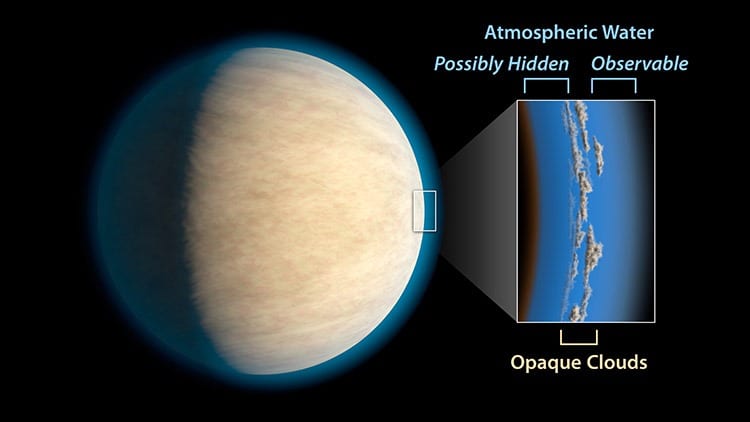
Editor: Philip Ragner | Tactical Investor
Water Found in Exoplanet WASP-39b
Much like detectives study fingerprints to identify the culprit, scientists used NASA’s Hubble and Spitzer space telescopes to find the “fingerprints” of water in the atmosphere of a hot, bloated, Saturn-mass exoplanet some 700 light-years away. And, they found a lot of water in. In fact, the planet, known as WASP-39b, has three times as much water as Saturn does.
Though no planet like this resides in our solar system, WASP-39b can provide new insights into how and where planets form around a star, say researchers. This exoplanet is so unique, it underscores the fact that the more astronomers learn about the complexity of other worlds, the more there is to learn about their origins. This latest observation is a significant step toward characterizing these worlds.
“We need to look outward so we can understand our own solar system,” explained lead investigator Hannah Wakeford of the Space Telescope Science Institute in Baltimore, Maryland, and the University of Exeter in Devon, United Kingdom. “But exoplanets are showing us that planet formation is more complicated and more confusing than we thought it was. And that’s fantastic!”
“WASP-39b shows exoplanets can have many different compositions than those of our solar system,” said co-author David Sing of the University of Exeter in Devon, United Kingdom. “Hopefully this diversity we see in exoplanets will give us clues in figuring out all the different ways a planet can form and evolve.” Full Story
Water in Exoplanet WASP-39b
Scientists at NASA recently used the Hubble and Spitzer telescopes to study the atmosphere of a Saturn-sized planet 700 light-years away. What their spectrographic study found is that the planet, known as WASP-39b, has a ton of water in its atmosphere—three times the amount that Saturn has.
WASP-39b is part of the Virgo constellation. It sits 20 times closer to its star (named WASP-39) than Earth is to the sun. Unlike Earth, it doesn’t rotate—only one side of the planet faces the star. That means there are extreme temperatures on WASP-39b, as high as 1,430 degrees Fahrenheit on the star-facing side.
The fact that WASP-39b has so much water means that it formed in a very different way than Saturn. NASA believes that the exoplanet probably formed far away from the star it orbits, where it picked up a lot of ice, and then migrated towards the star, until its ice melted into water vapour. According to the researchers, this means WASP-39b might have “obliterat[ed] planetary objects in its path”. Full Story
Other Articles of Interest
Stock Market Insanity Trend is Gathering Momentum (Jan 10)
Is value investing Dead (Jan 9)
Will The Stock Market Crash In 2018 (Dec 11)
Has US Dollar Finally Hit Bottom (Dec 6)


